The now familiar horseshoe shaped avenue began as 2 separate driveways on Main Street which eventually connected.
*
The area which would eventually form Hubbard Avenue, as well as much of the future Hartland Village area, was originally part of the future town of St Albans when it was purchased by William Moor of Goffstown, New Hampshire. Moor first came to explore the area around 1796 after St Albans was first surveyed as Township No. 5 in the 4th Range north of the Waldo Patent. Moor’s expansive lot stretched along both sides of the Sebasticook River and remained part of St Albans when it incorporated at a town in 1813 and remained as such when Hartland incorporated in 1820.
This edited close-up of the original map surveyed by Samuel Weston in 1798 is rotated to a north-south perspective and highlights the original existing borders at the time of future towns surrounding Moor’s Lot S-17.
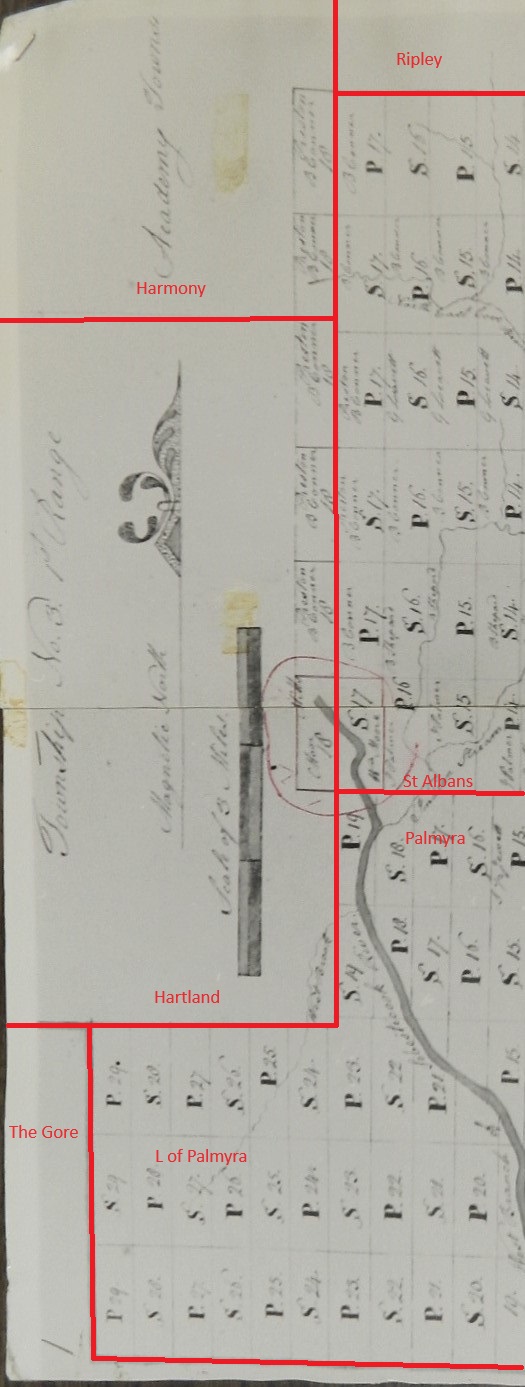
Edited Map of William Moor’s Lot S-17 location in Township No. 5 – 1798
*
For further visual reference, Moor’s entire Lot is highlighted below as it would have existed on a future map of the village area in 1883.
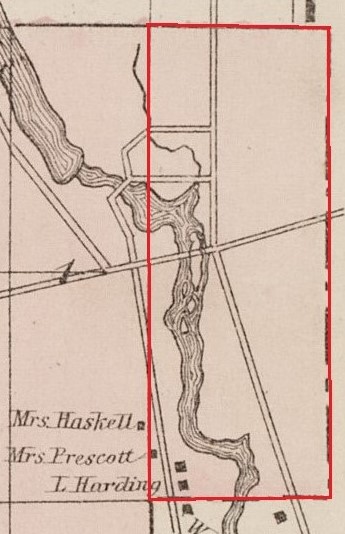
William Moor Lot Location Reference
*
Currently, no maps of Hartland detailing the locations of homes, businesses and merchants before 1860 have been discovered. Various documents provide us with enough information to know many existed in its early years of settlement, but most of the specific details of when they were built or by whom remain unknown. The following is based on our best interpretation of known maps, town records, census data, historical book references, photos, newspaper articles, artifacts and family genealogical information. Updates will be made as new information is discovered.
*
William Moor (1776-1848) traveled back and forth from his native home of Goffstown, New Hampshire as he worked to improve a piece of his new lot along the eastern bank of the Sebasticook River on what became Commercial Street with a log home and a sawmill on the river. On one of his return trips to New Hampshire in 1797, he married Sally Moor (1773-1856) and in 1802 permanently returned with Sally and their 2 oldest children to settle on their lot. They remained there raising their eventual family of 8 children until they moved to Corinna with their 6 youngest children soon after 1820. Their 2 elder children, Maria and James, remained in the area where James built his home on Main Street and had an important role during the early years of development of Hartland town affairs and its industry.
Maria Moor (1797-1868) married John Stinchfield, Sr (1793-1880) in 1815 and had 7 known sons. Although they were included in Federal Census Reports for St Albans from 1820 through 1840, other records indicate they likely settled along the western side of the river on land from her father’s original lot which was still part of St Albans until 1846. The 1850 Census listed them in Hartland where John was noted as a “clothier” as was his 24 year old son Benjamin and 20 year old son John, Jr who were living with them at the time as was their 11 year old son Calvin.
*
As growth in population, industry and commerce continued on both sides of the village area over the years, it further escalated old issues and since created new concerns with the divided village area border. Despite these growing concerns, it would take many years and several discussions among citizens of both towns before the current borders of the village area between Hartland and St Albans were finally established following an 1846 petition presented by inhabitants of St Albans living on the western side of the village area to the Maine State Legislature.
On August 7, 1846, the Legislature formally approved an Act to again alter some of the Hartland and St Albans town line on the eastern and a part of the western side of the village reading in part as, “From and after the passage of this act, all that part of the Town of St Albans, in the County of Somerset, which lies west of Lot Numbered Sixteen, in the First Range of lots in said Town of St Albans, be, and is hereby set off from said Town of St Albans and annexed to the Town of Hartland in said County.”
As seen on this illustrated future map of 1883 as reference, the majority of this annexed land, including future Hubbard Avenue, was William Moor’s entire original Lot Seventeen which had since been divided into multiple properties. Also included was a small section of land west of the northwest side of Moor’s lot bordering the Sebasticook River which had been previously annexed from Hartland to St Albans in 1821.

Hartland Village following 1846 Land Annexation from St Albans
*
Currently, no records have been found to indicate exactly when the Carding Mill first existed, but related documents indicate it was likely built by John Stinchfield, Sr next to the Stinchfield Homestead accessed at the time by a short private entryway from Main Street.
As seen on the 1860 map below, his son John Stinchfield, Jr (1830-1861) was listed as owner of the Stinchfield Homestead just before his untimely death in 1861 at 31 years old. The index of the 1860 map also notes “J. Stinchfield, Carder and Clothier” but does not specify Jr or Sr although the latter was 67 years old at the time. His obituary implies John Stinchfield, Sr was still living at the homestead at the time of his son’s death but it is unknown if he continued operations at the Carding Mill.
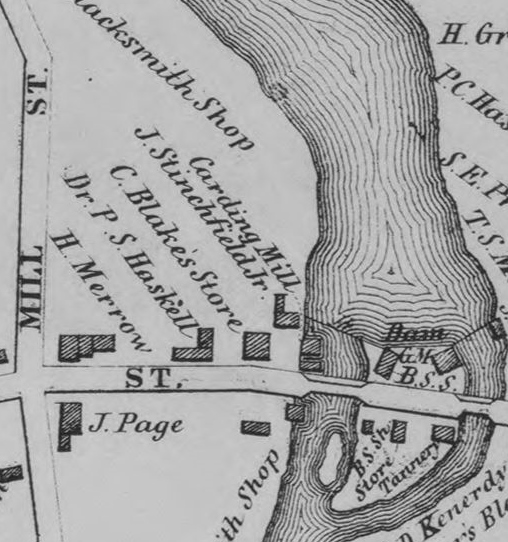
Hartland Village – 1860
*
John Stinchfield, Sr & Maria moved to Skowhegan in early 1868 joining their sons Benjamin and Calvin Stinchfield who lived next door to each other. Maria passed away soon after they moved and John was living with Calvin in Skowhegan in 1870 noted at 77 years old. His obituary noted several details of his life including his time in Hartland noted as “then St Albans” and his profession as a clothier. He and Maria are interred together at Southside Cemetery in Skowhegan with Benjamin and Calvin.
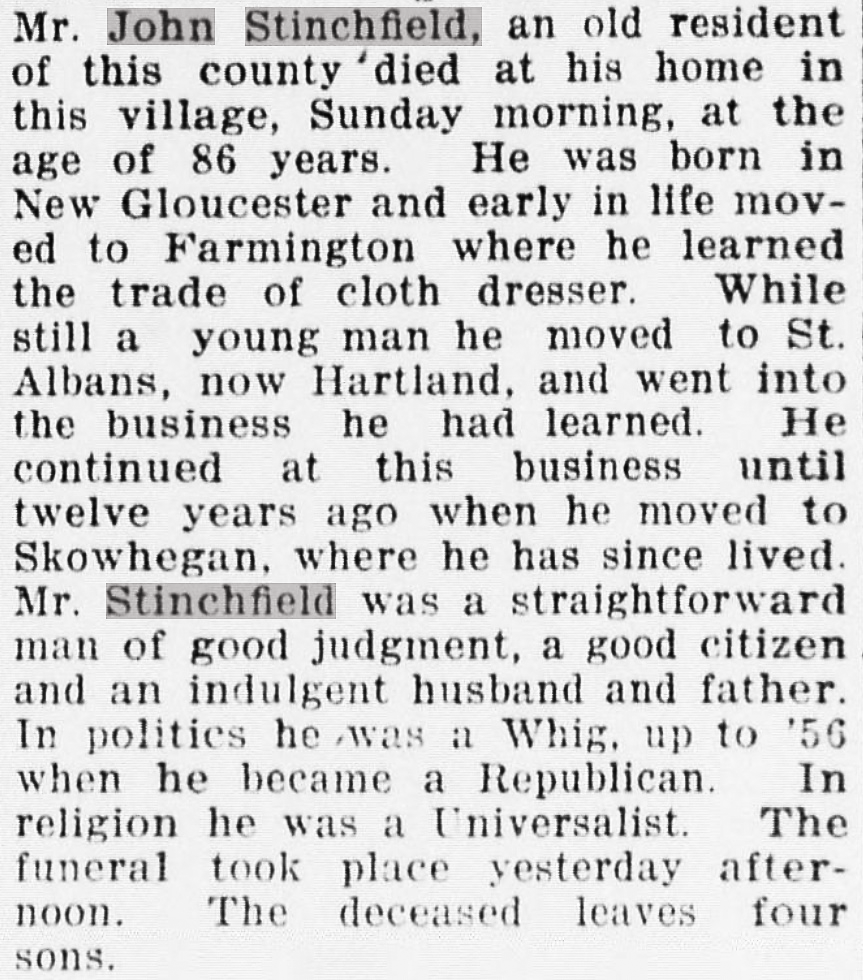
John Stinchfield, Sr Obituary – Died May 23, 1880
*
George Fairgrieves was working as a weaver in Lawrence, Massachusetts in 1850 where he and his wife Margaret Brodie were living soon after they had immigrated from Scotland. Sometime after 1860, they moved to Hartland with their children George Brodie Fairgrieves, Agnes, John & James. George & Margaret likely purchased the Stinchfield Homestead around 1868 when John & Maria Stinchfield moved to Skowhegan.
In 1869, the Carding Mill was sold by the Fairgrieves to James M. White, a native of Scotland who had recently moved from Bridgton to Hartland where he was noted in the 1870 Census with his wife Janet Lenox and their 2 surviving children, Margaret & Richard. An 1890 legal notice refers to the previous (undated) deed for its original sale by John Stinchfield, Sr to George & Margaret Fairgrieves as recorded in Book 99, Page 30 of Somerset County Deeds. White only remained in business for a couple of years before returning to Bridgton soon after 1870 then moving to Skowhegan in 1877 where he remained until his death. While they were living in Hartland, their son John White died in 1869 at 3 years old and was interred at Ireland Cemetery. He was joined there by his mother upon her death in 1894 and his father in 1906.
*
George Fairgrieves’ fate remains unknown but he was not listed with his family in Hartland in the 1870 Census however he was noted in the 1869 sale of the Carding Mill above. Margaret was listed as Head of Household in the 1870 Census with her 3 sons. Her daughter Agnes Fairgrieves had married Flavius Joseph Goodspeed earlier that year and they were also living with Margaret at the time. By 1871, Flavius Goodspeed was operating a business at the Carding Mill as noted in the Maine State Yearbook producing satinet, noted as “a finely woven fabric with a finish resembling satin but made partly or wholly from cotton or synthetic fiber”. He left town briefly around 1878 according to a local newspaper article but returned to Hartland by 1879 and continued operations at the Carding Mill after making repairs to the building.
Flavius & Agnes were still living with Margaret with their 2 young children as noted in the 1880 Census. By this time, Margaret’s son James had passed away in 1875 and her other 2 sons had moved out of town. Flavius continued operations at the carding mill until around 1882 when he and Agnes left for Wilton with their children where he continued working in the woolen mill industry. Margaret remained at the homestead alone and was noted as its owner on the 1883 map below as “Mrs. Fairgrieve”.
Part of the remaining lot behind the Fairgrieves Homestead on the river side had been purchased by the Robert W. Linn, Sr by 1883 which was later adsorbed into the real estate holdings of the Linn Woolen Mill Company. Most of the westerly side of the lot was owned by Caroline W. Prescott who was living on Main Street noted on the map below as “Miss K. W. Prescott”.
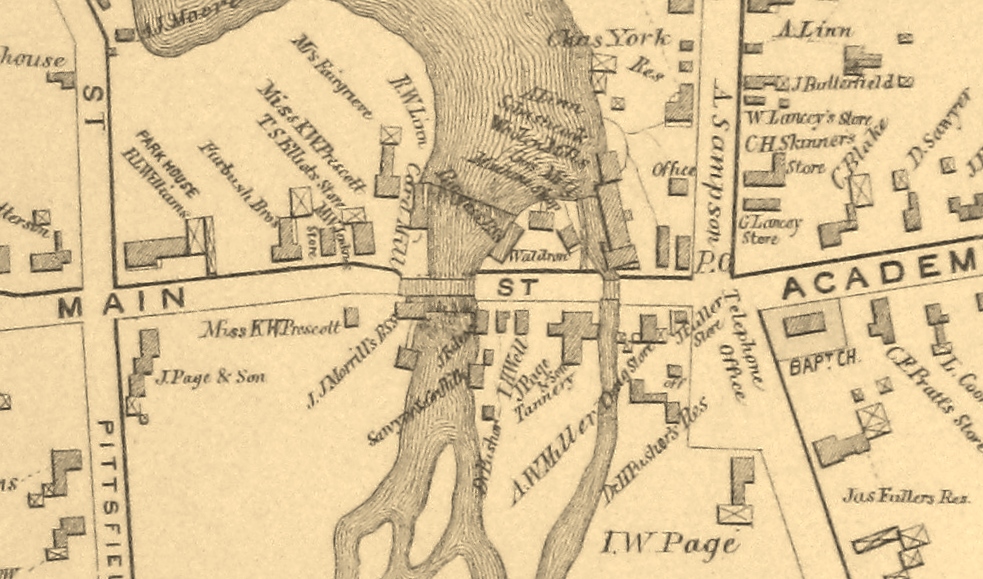
Hartland Village – 1883
*
Following F. J. Goodspeed’s departure to Wilton, George L. Morrison, originally from Dexter, opened his new business in the Carding Mill building in 1885 where he operated until 1888 when he bought a financially faltering woolen mill in Ellsworth at auction. Morrison moved there in 1889 to operate it full time and closed his business in Hartland.
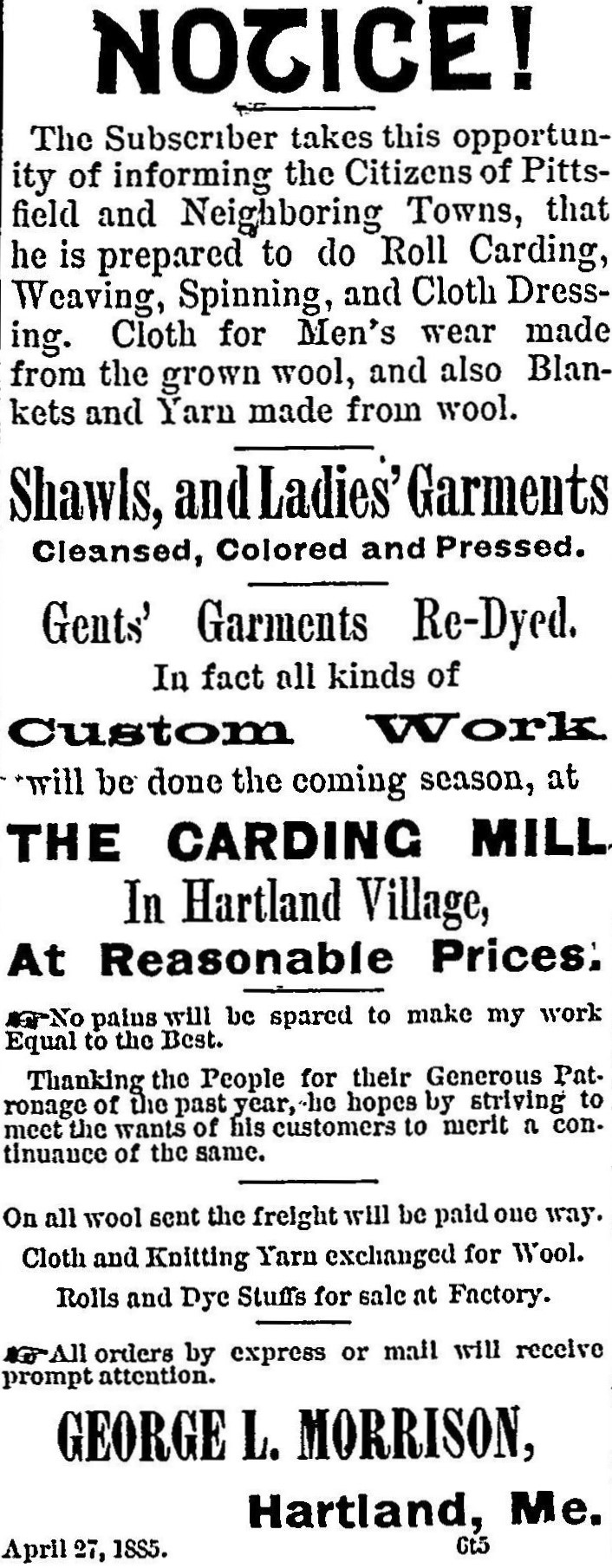
Morrison Advertisement – April 27, 1885
*
In 1891, Everett C. Waldron leased the Carding Mill and opened a business he operated for a couple of years.
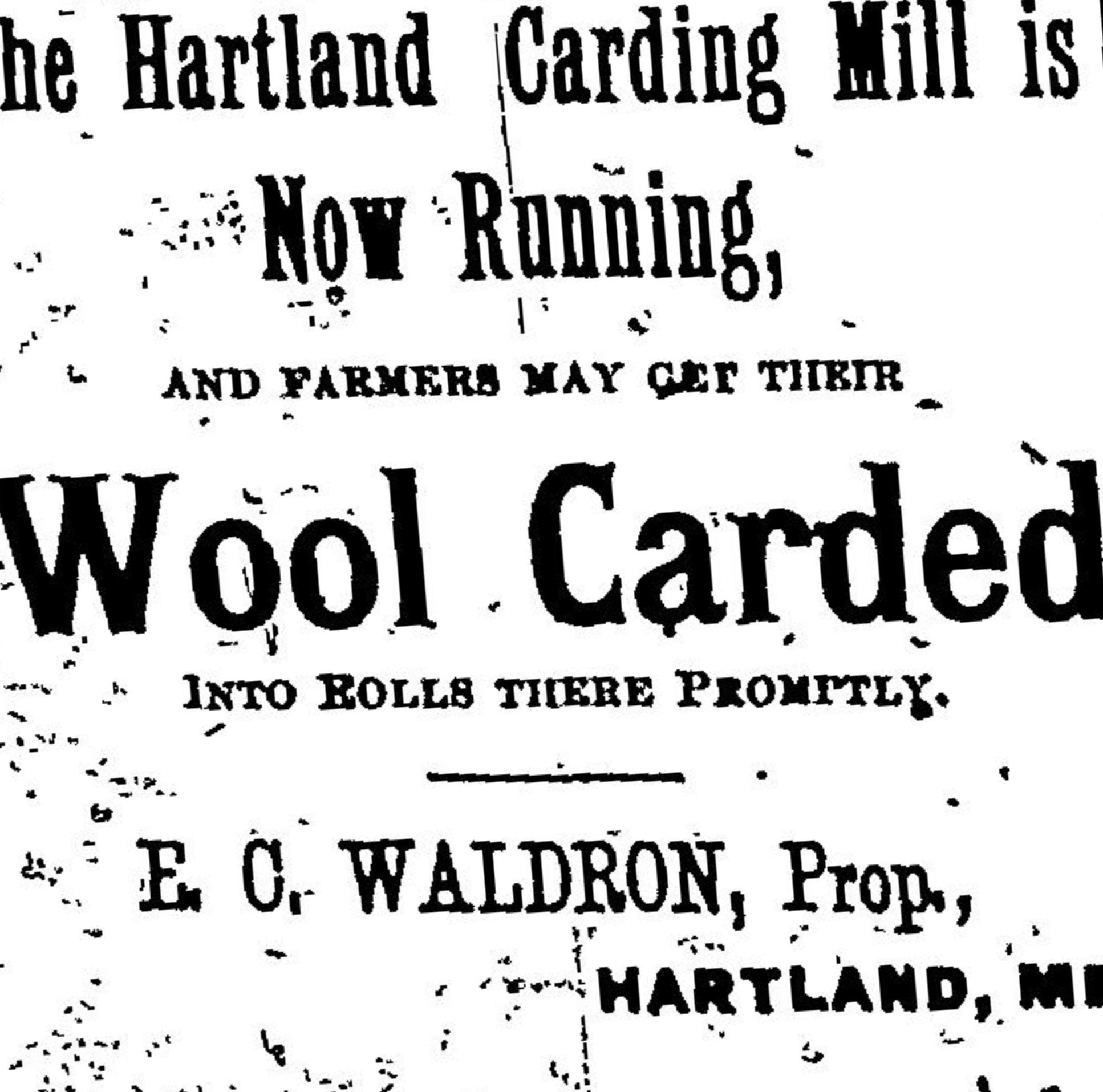
E. C. Waldron Carding Mill Ad – 1891
*
Following Waldron’s departure, another carding business opened at the Carding Mill in 1893.
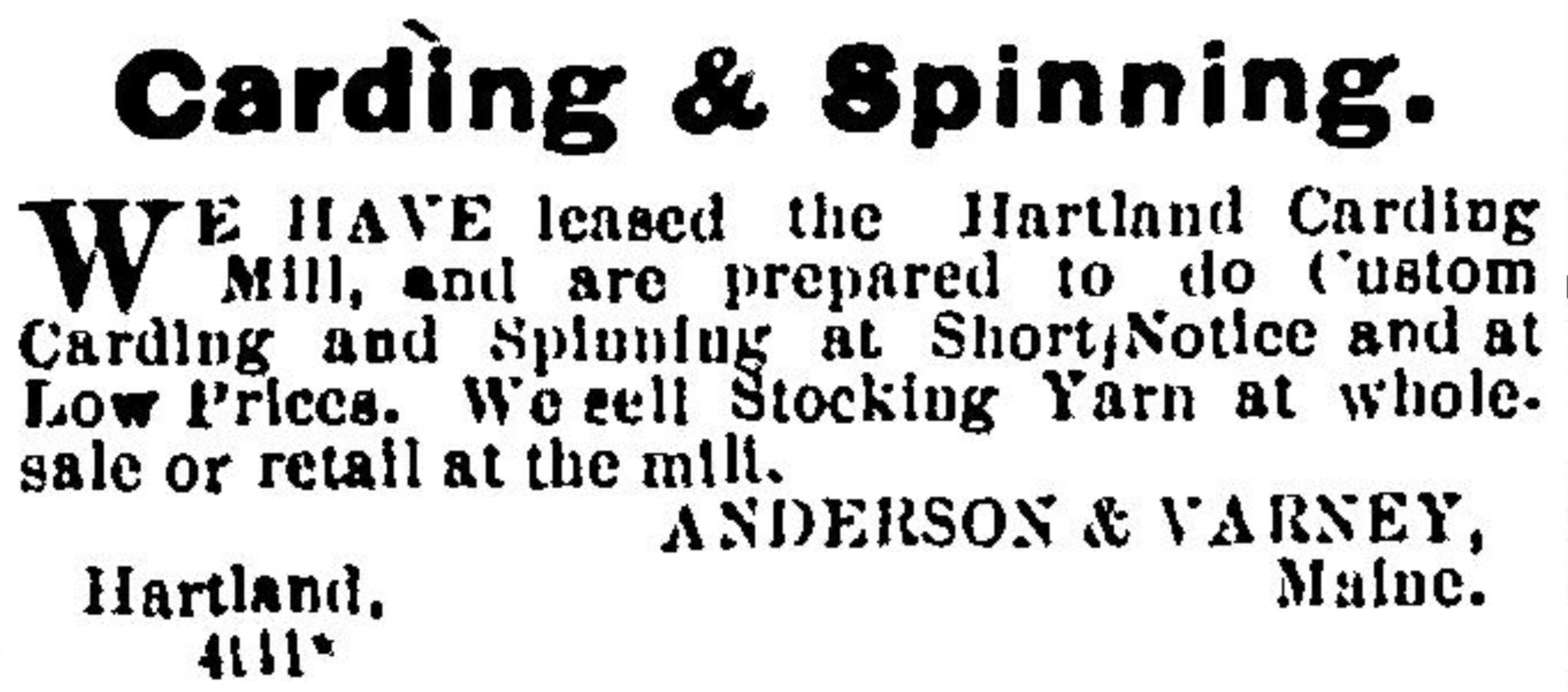
Anderson & Varney Ad – 1893
*
In the early 1890s, Ensign Fletcher Hubbard (1843-1922), a Civil War Veteran, moved from Canaan to Hartland with his wife Augusta Burns. He purchased the former M. W. Jenkins Store on Main Street operating by 1895 as “E. F. Hubbard Groceries, Notions & Hardware” and would soon play a major role in the creation of the future Hubbard Avenue. Hubbard remained in business at the location until 1920 when he sold it just before his death in 1922 at almost 80 years old. Further details on the store’s future successors after Ensign are included on the Main Street page.
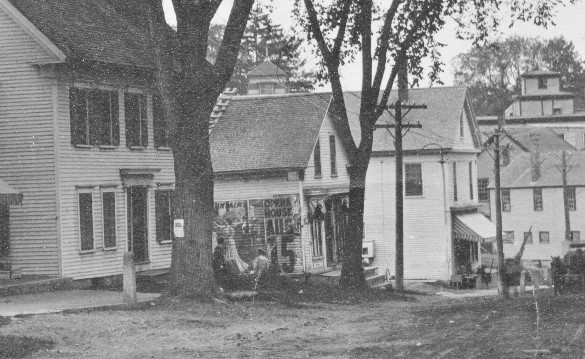
E. F. Hubbard Groceries, Notions & Hardware (center) on corner of Main Street & Hubbard Avenue – c1910
*
In September of 1895, Margaret Fairgrieves passed away at 70 years old and was interred with her son James at Pine Grove Cemetery. The fate of the homestead and the Carding Mill remained in limbo for a couple of years as an 1897 probate notice from the estate lawyer requested representation of the estate be given to her son George B. Fairgrieves who had moved to Skowhegan. George and his wife Martha Worcester would also be interred at the family plot upon their deaths in the 1930s.
As seen on the 1896 map, the Fairgrieves Homestead and Carding Mill, both still in probate, were still the only buildings on the future Hubbard Avenue lot at the time. A little more than half of the westerly side of the lot was still owned by Caroline Prescott with most of the remaining land along the river still owned by the Linn Woolen Company.
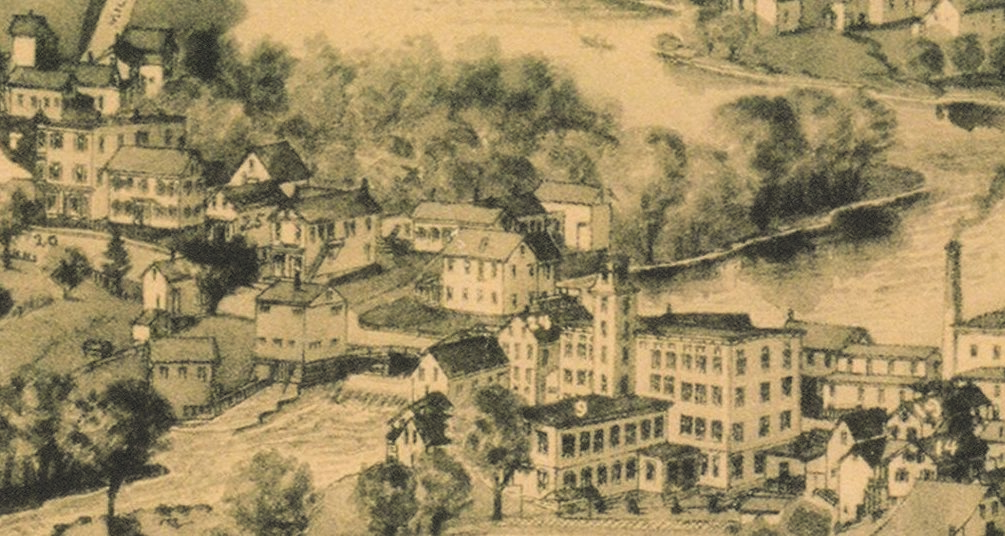
Hartland Village – 1896
*
An undated photo shows the end building of the Fairgrieves Homestead seen on the 1896 Map just beyond the Carding Mill on their private entryway from Main Street. To the front of the building is the Hartland Grain & Grocery Store on Main Street which is hidden from view by the blacksmith shop below the Main Street Bridge.
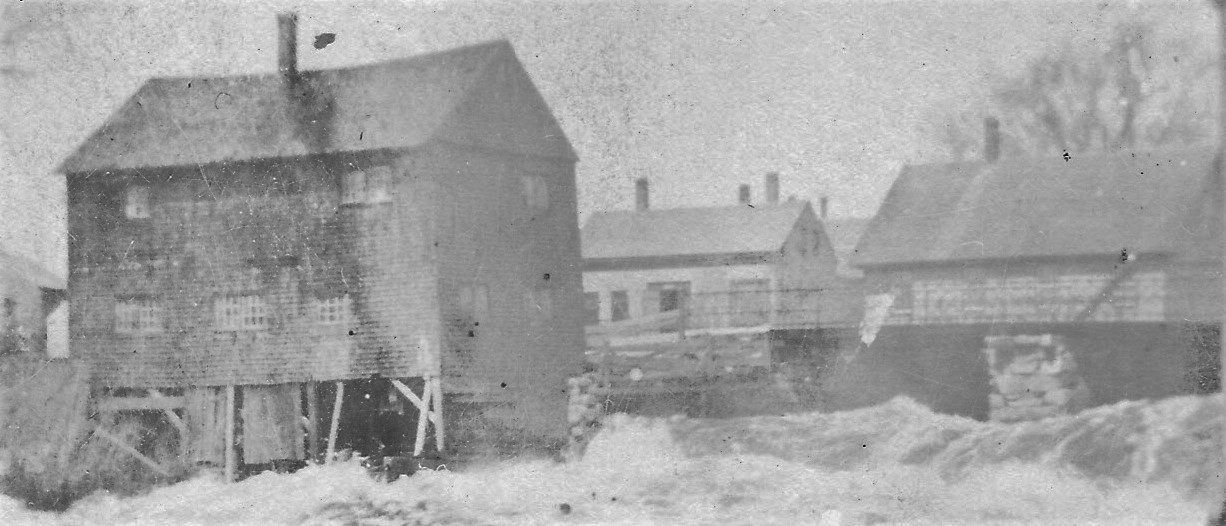
End building of the Fairgrieves Homestead (center) seen from below the Main Street Bridge with Carding Mill (right)
*
On January 11, 1898, George B. Fairgrieves sold the family homestead and property along with the Carding Mill to the Linn Woolen Mill Company adding to their real estate holdings on the river side of the lot.
Soon after the sale, all woolen related equipment was removed and the building cleared when Allen R. Burton rented the building in 1898 to open his first business operating a furniture store.

Pittsfield Advertiser – May 19, 1898
*
As noted in a follow up article, Burton also began providing undertaking services at the Carding Mill location which he continued when he moved the business in 1914 to Commercial Street eventually operating as A. R. Burton Furniture & Undertaking. Following Burton’s move, the Carding Mill building was used mostly for wool storage by the woolen mills into the early 1930s.

Pittsfield Advertiser – June 2, 1898
*
By 1900, Ensign Hubbard purchased land behind his store from Caroline Prescott and built his house creating a private dead end entryway from Main Street next to his store. Hubbard built another house in 1907 extending the entryway to the end of the lot which became known as Hubbard Avenue. It would eventually connect to the private entryway at the Main Street Bridge forming the familiar horseshoe shaped avenue.
*
As noted in a 1915 foreclosure notice, the Linn Woolen Mill Company had purchased the remaining piece of property on the lot owned by Caroline Prescott on September 2, 1902 effectively splitting the lot into 2 sides with the other side owned by Ensign Hubbard. Soon after, they extended the Main Street entryway past the former Fairgrieves Homestead and built 3 nearly identical houses on their property as homes for some of their management employees and their families. The 1910 Census lists 5 families residing on what is noted as Linn Street with all the Head of Households and several family members working at the woolen mill. The 3rd house later had a separate garage where its driveway on the outside of the bend eventually connected the new street to Hubbard Avenue by 1917.
In 1915, the Linn Woolen Mill Company filed for Bankruptcy and the American Woolen Company purchased their 2 woolen mill buildings as well as many of the numerous real estate holdings the Linn Family had acquired over the decades since Archibald Linn came to town in 1862. Among the holdings were the 4 houses and properties previously purchased or built by the Linn Woolen Mill Company and the former Carding Mill on Fairgrieves Avenue; the Linn Street designation dropped.
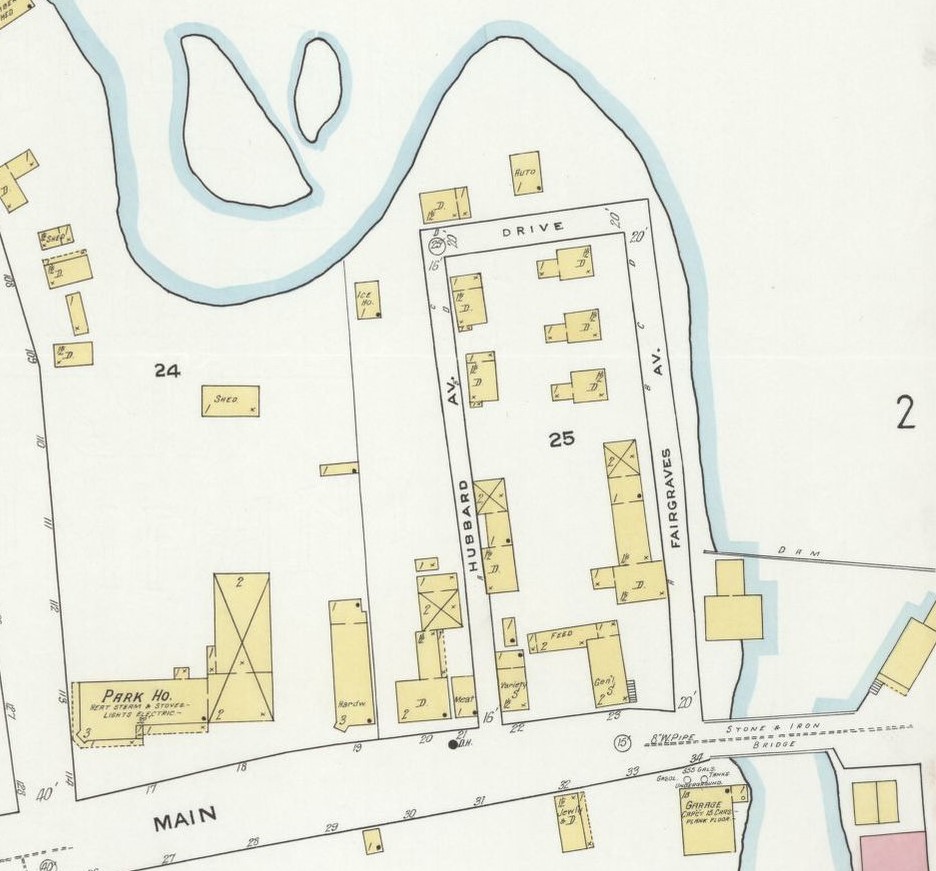
Sanborn Insurance Map – 1917
*
Between the release of the 1917 Sanborn Map above and flood in 1923, the American Woolen Company razed the entire former Stinchfield-Fairgrieves Homestead and built a 4th new house on the lot leaving the property where the attached buildings had stood as an open lot.
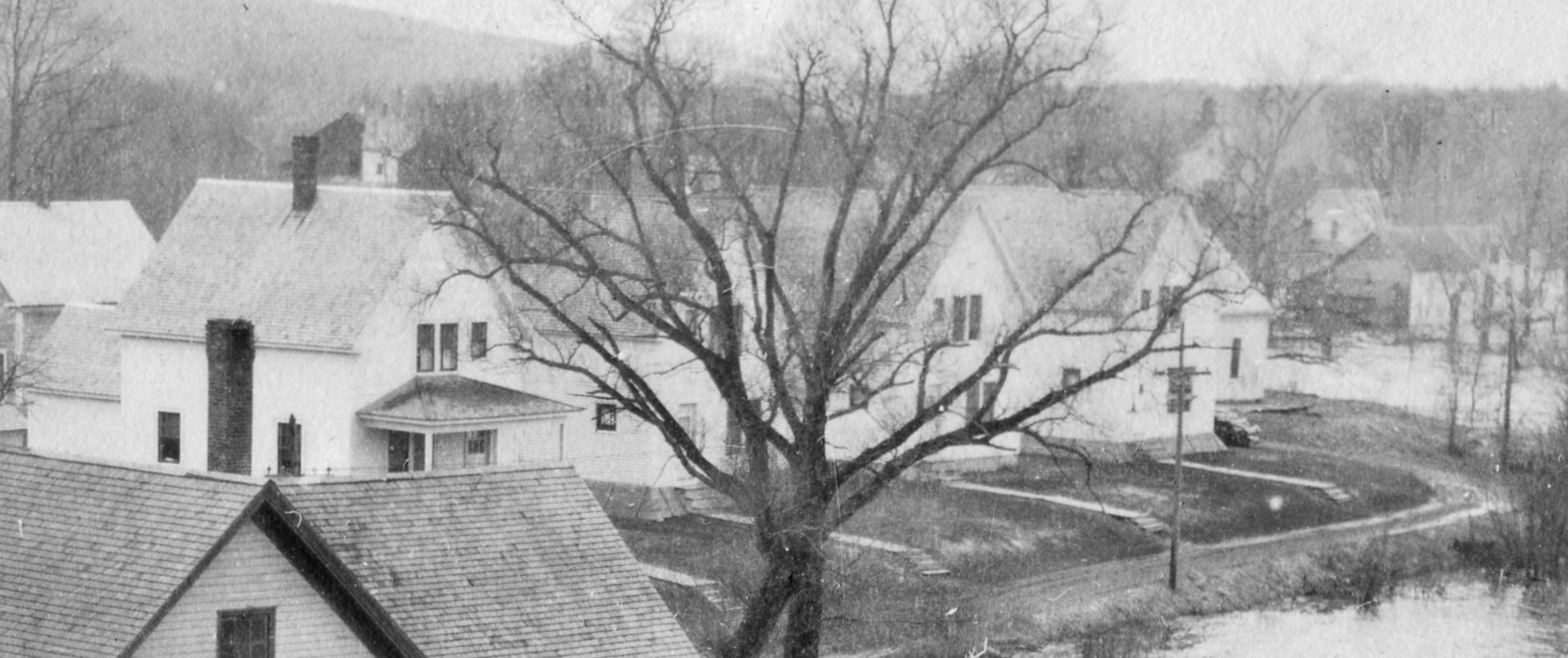
Fairgrieves Avenue – Sebasticook River Side – 1923
*
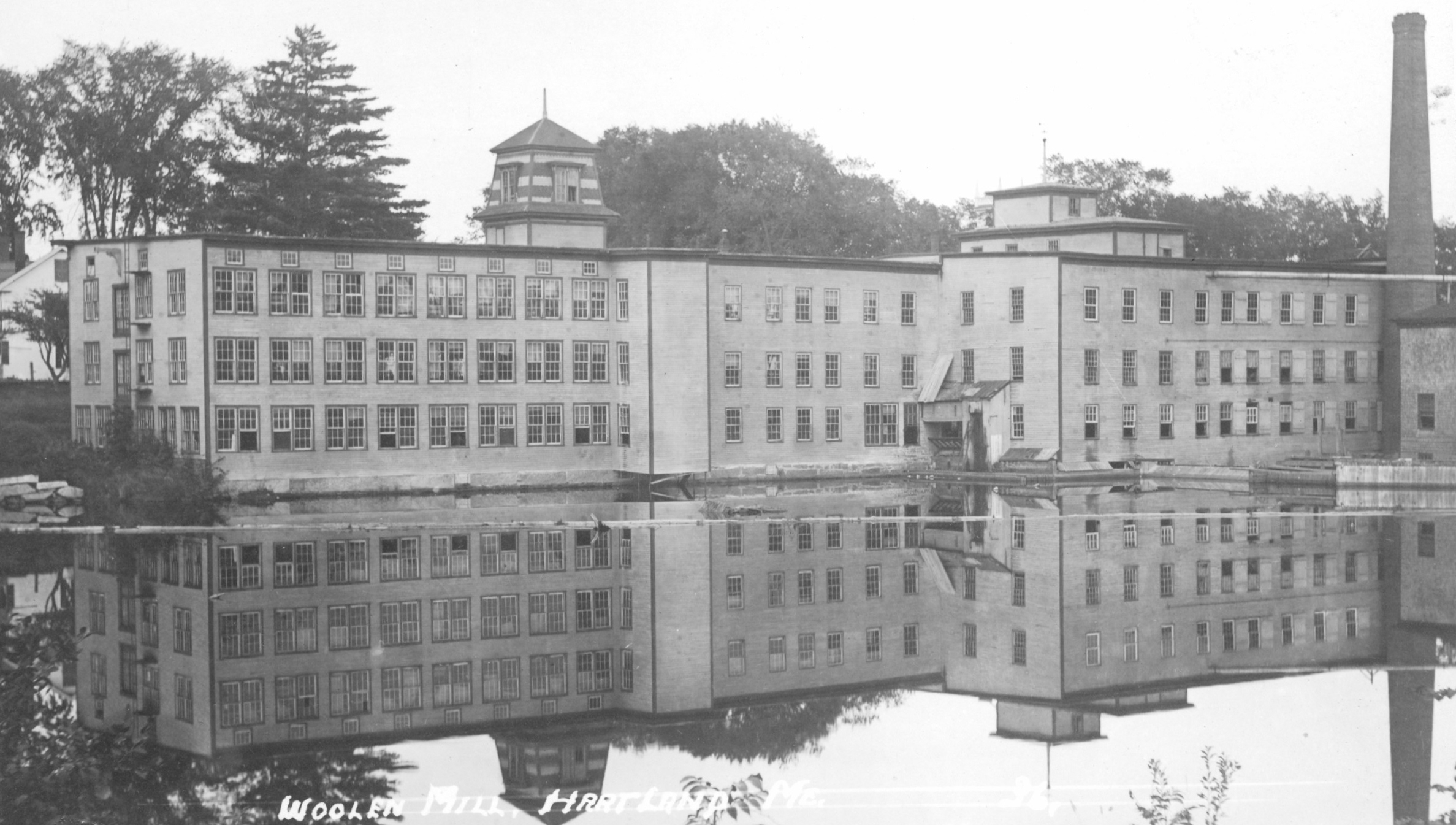
American Woolen Company Upper Hartland Mill from Fairgrieves Avenue
*
The Great Flood of 1923 caused considerable damage to the Upper Dam area and Lower Dam area especially at the American Woolen Company buildings on Main Street, however Hubbard Avenue & Fairgrieves Avenue were basically spared from the flood waters except for some of the road on the river’s edge.
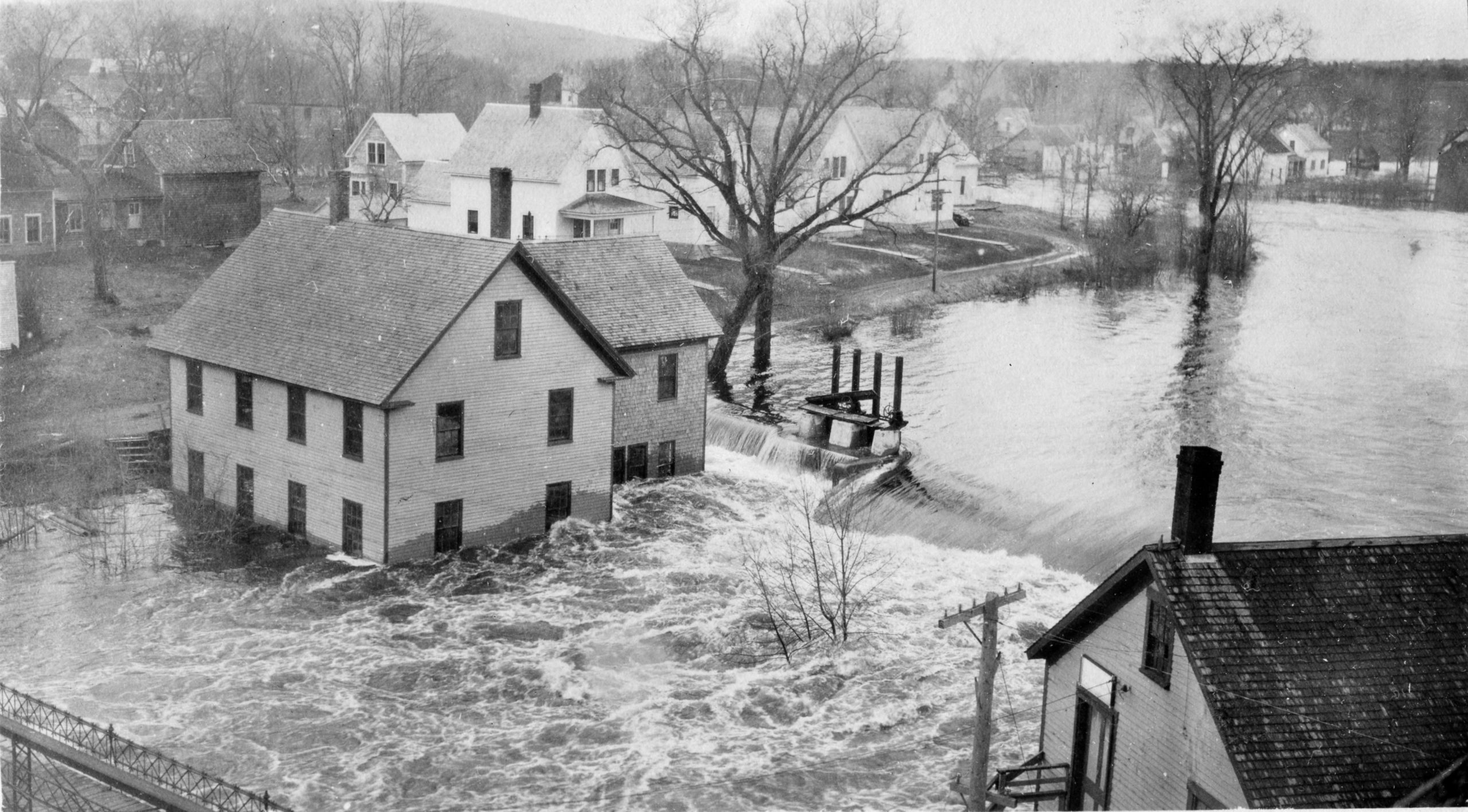
Carding Mill & Fairgrieves Avenue – Great Flood of 1923
*
In 1932, the American Woolen Company declared bankruptcy following economic issues throughout their numerous New England operations resulting from the 1929 Black Friday Stock Market crash. Soon after the announcement, the Great Auction of 1932 of the company’s real estate holdings in Hartland was held which included numerous houses and properties formerly owned by Archibald Linn and the Linn Woolen Mill.
The Carding Mill building was not included in the auction and was part of the properties including the 2 main mills and a few outbuildings on the island reserved for future use by the town. The auction did include the 4 houses and their respective lots on Fairgrieves Avenue (incorrectly noted in the auction brochure as Mill Street) along with the empty lot where part of the Fairgrieves Homestead had sat before being razed. The auction map clearly shows the property line division of the entire Hubbard Avenue lot.
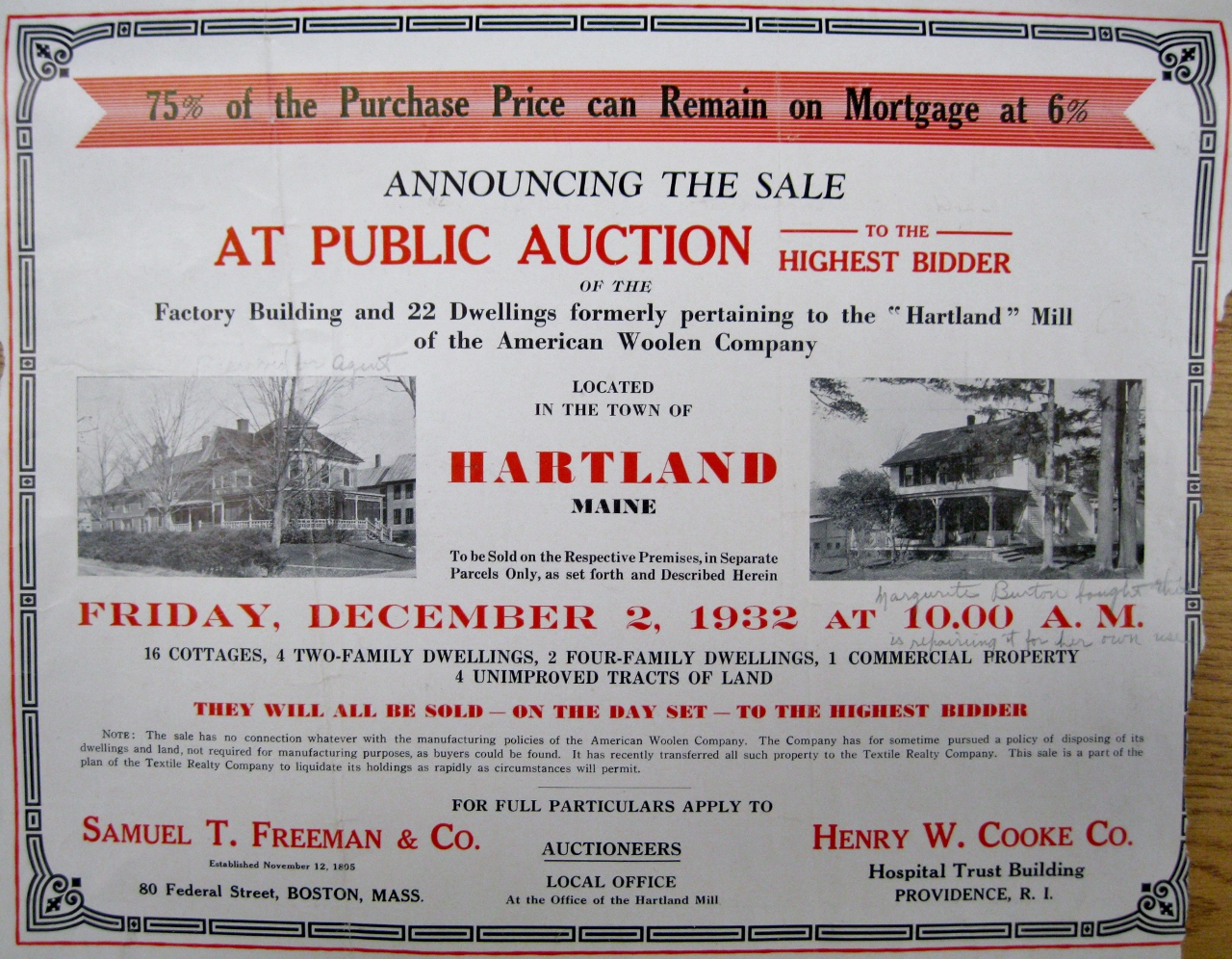
Cover of Auction Brochure – 1932
(Photo courtesy of Wayne Libby)
*
The original auction descriptions & drawings for lots #13 though #17 on Fairgrieves Avenue with purchase notes from the day of the auction by Fred Libby. Lots 13 & 14 were the location of the entire former Fairgrieves Homestead and were split up for the auction.
13. NO. 24 MILL STREET: Approximately 5,100 (7,320 on map) square feet of land with one and one-half-story frame cottage. Having six rooms, electricity, bath, toilet. (Purchase-Unknown)
14. MILL STREET: Building Lot. Approximately 5,360 (9,075 on map) square feet of land. (Purchase-Unknown)
15. NO. 25 MILL STREET: Approximately 5,800 square feet of land with one and on-half-story frame cottage, having six rooms, electricity, bath, toilet. (Purchased by Mary Holmes for $675)
16. NO. 26 MILL STREET: Approximately 5,100 square feet of land with one and one-half-story frame cottage, having six rooms, electricity, bath, toilet. (Purchased by Ernest Seekins for $600)
17. NO. 27 MILL STREET: Approximately 16,600 square feet of land (6,330+10,270) with one and one-half-story frame cottage, having six rooms, electricity, bath, toilet, also frame garage (on Lot 17-A). (Purchased by Myrtle Blake for $725 plus $100 extra for garage)
*
The auction also included the former Caroline Prescott Homestead (#19) on Main Street which had been purchased by the Linn Family by 1902.
19. NO. 32 MAIN STREET: Approximately 21,000 square feet of land with one and one-half story frame cottage having five rooms, also large barn. (Purchased by Asa Ladd for $450)
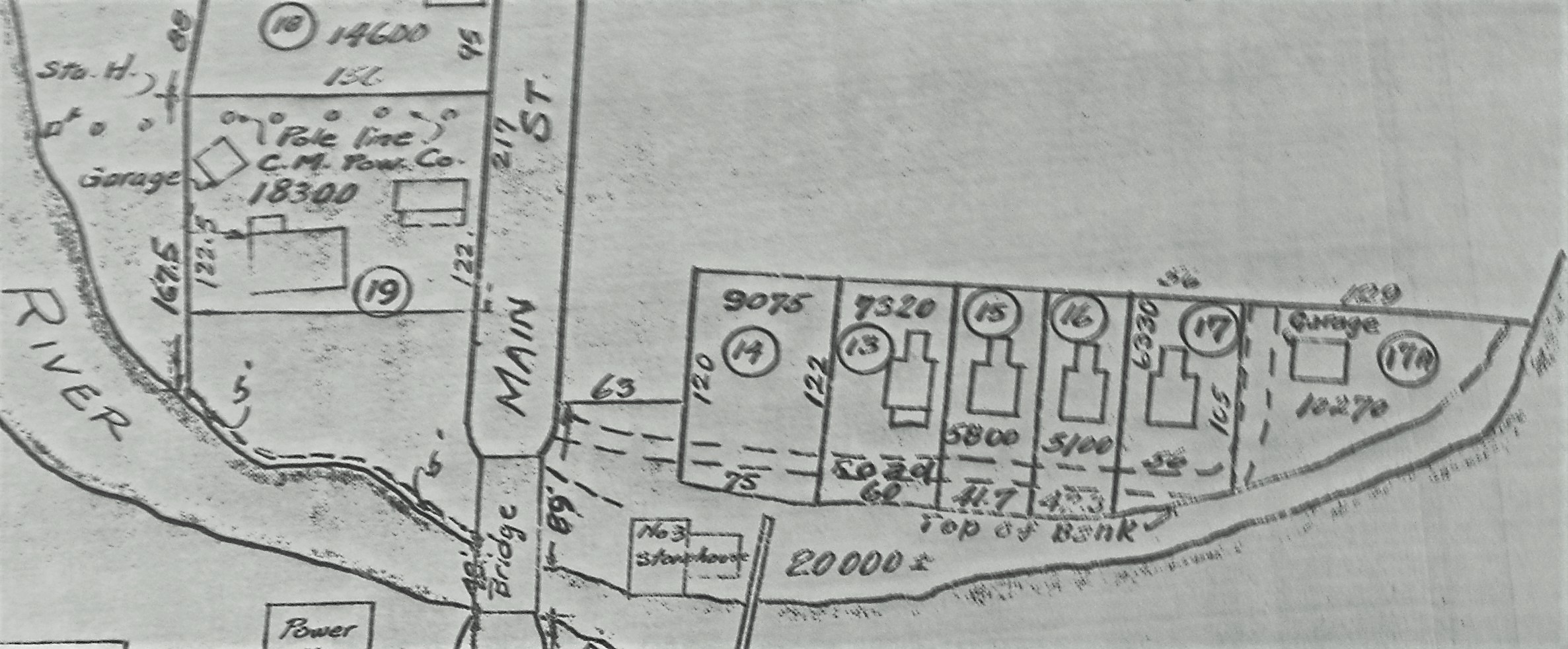
1932 Auction Lot Map for Fairgrieves Avenue & Main Street
*
Following the American Woolen Company’s departure, numerous attempts were made to bring a new industry to town by the citizen formed Hartland Mills, Incorporated which took over ownership of the main mill buildings and several other reserved properties including the Carding Mill building. They were finally able to negotiate an acceptable long term deal in late December of 1935 with Meyer Kirstein of Irving Tanning Company of Peabody, Massachusetts and in 1936 the new Hartland Tanning Company successfully began operations.
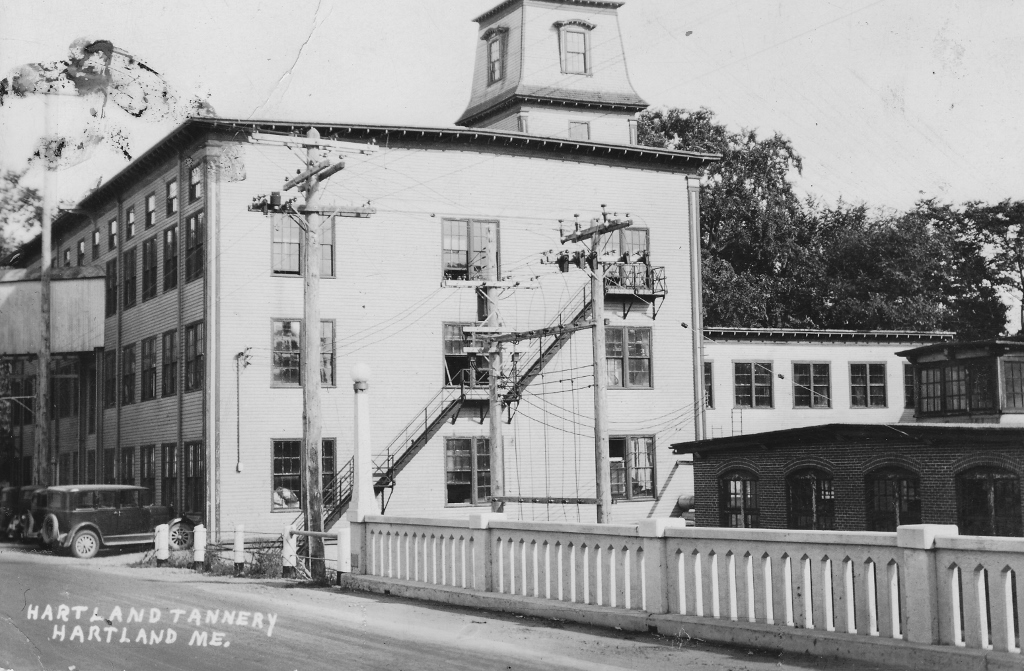
Hartland Tanning Company – c1939
*
Along with the 2 former mill buildings, another of the buildings and properties initially included in the lease by the new Hartland Tanning Company from Hartland Mills, Inc. was the Carding Mill building and its lot, however it did not include the small lot and a couple of buildings located next to the Lower Dam on the northern side of the Sebasticook River Island. Soon after, negotiations between the two parties basically resulted in an exchange of the island lot for the Carding Mill building and lot. In turn, Hartland Mills, Inc. deeded the Carding Mill building to the town in 1940 with intentions for it to be used as the home of the newly re-organized Hartland Volunteer Fire Department who moved into the building in March of 1941. The existing buildings on the island lot would eventually be razed and turned into a parking lot with a scale house built for the tannery.
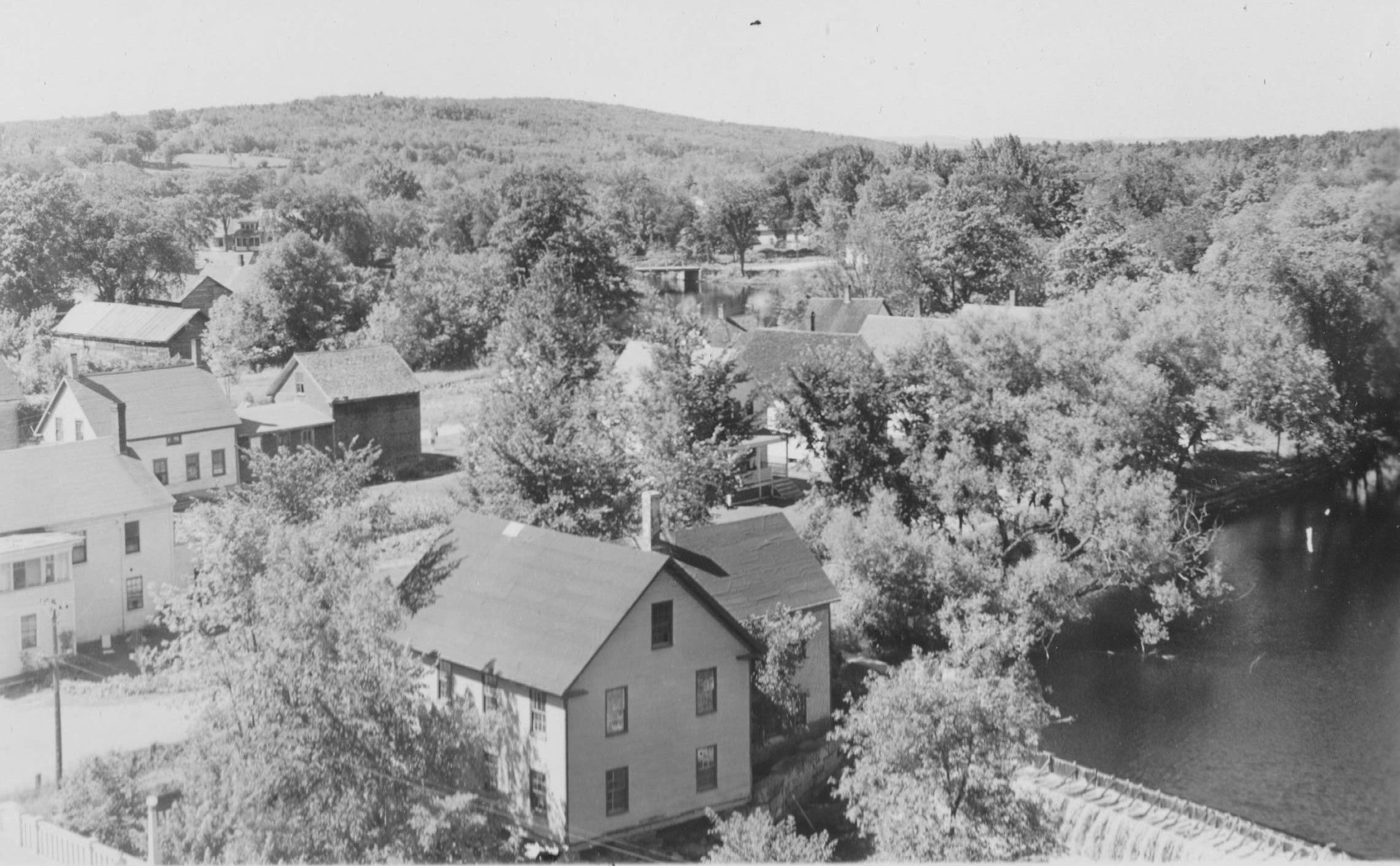
Former Carding Mill Building at the Lower Dam on Fairgrieves Avenue – 1944
*
Although still unofficially recognized as a street by the town, it remained referred to locally usually as Fairgrieves Avenue from the river side entrance and Hubbard Avenue from the other entrance. Other newspaper articles would also occasionally refer to Fairgrieves Avenue as River Street.
Ensign Hubbard had already moved to Pittsfield Avenue a few years before he sold his store on Main Street in 1920 just before his death in 1922. His daughter Cora Hubbard (1879-1951) and her husband Clarence Estes likely inherited or purchased his 4 houses and properties on the Hubbard Avenue side of the lot where they were living in 1920. They moved to Warren Hill in Palmyra by 1930 but were still noted as owners when the 1943 map was surveyed until they sold all the properties soon after.
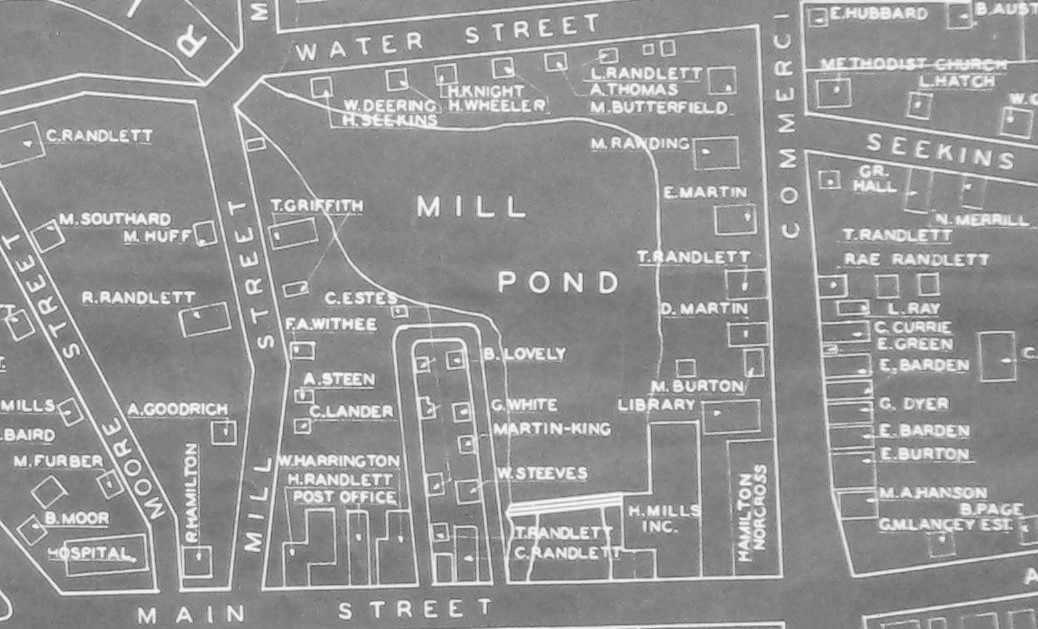
Hartland Village – 1943
*
Several modifications would be made by the Town and Fire Department to the former Carding Mill building including turning the building a quarter turn in 1948 so it would face Fairgrieves Avenue lengthwise in order to accommodate their newly acquired fire truck and future trucks. In spite of their efforts to renovate the original building, its old main support columns and weakened floor were unable to accommodate the weight of additional fire trucks and other equipment.
In 1956, the building was razed and a new concrete foundation was poured to support a new cement block Hartland Volunteer Fire Department Hall which opened the following year. Many further renovations were made to the building before a brand new Fire Hall was built on Outer Main Street which opened in 2000. The former Fire Hall would later be used as the home of the Tri-Town Food Cupboard which still operates from the building today.
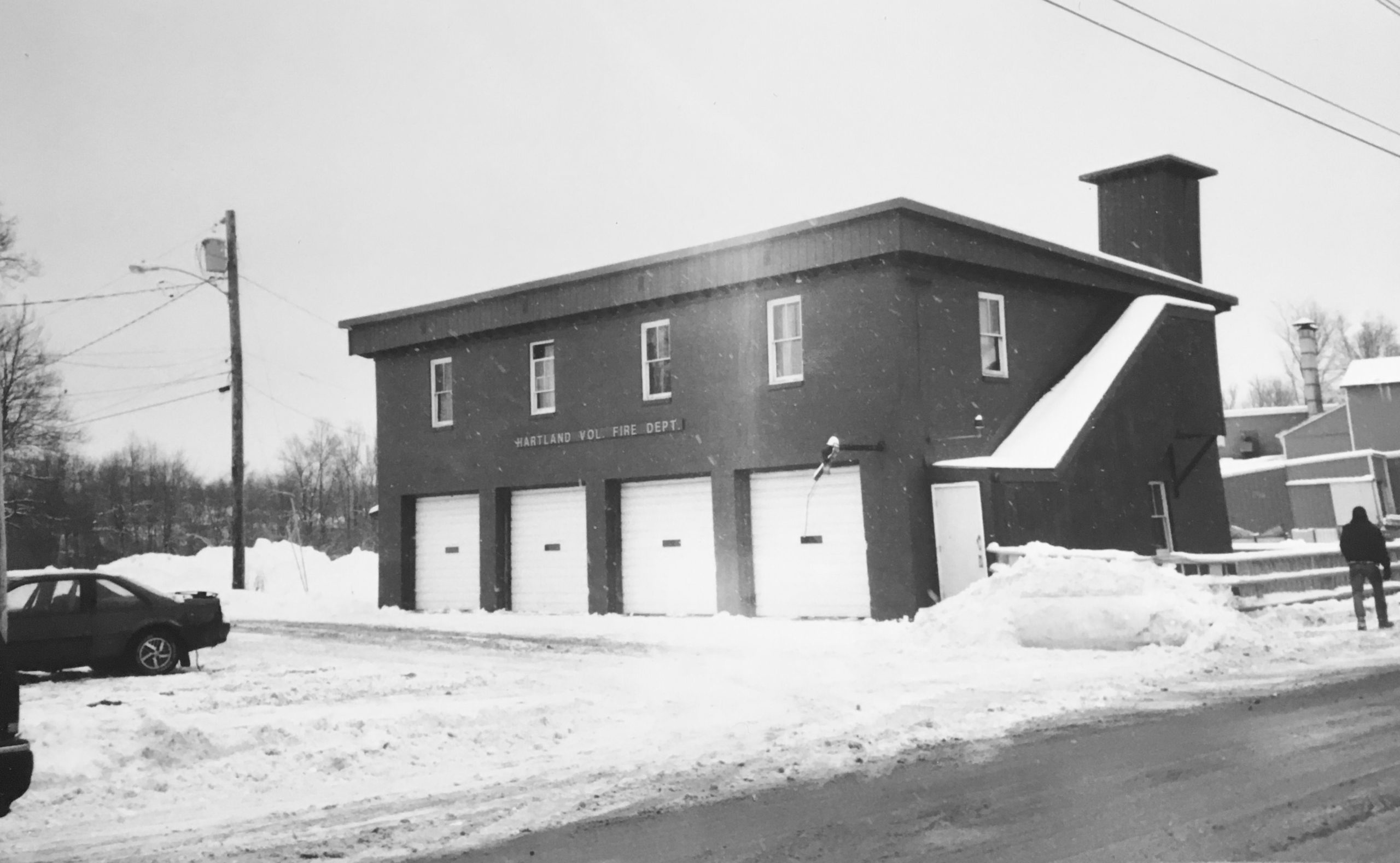
Hartland Volunteer Fire Department Hall – c1980
*
In 1958, Hubbard Avenue officially became a Village Street posthumously bearing its namesake Ensign Hubbard’s designation.
1958 Town Meeting – Article 51: “To see if the town will vote to accept as a village street, the town way as laid out by the selectmen and described as follows: Beginning on the North side of Main Street between the property now owned by Hope Wyman and Wesley Harrington and extending in a Northerly direction, following the same course as the private way now known as Hubbard Avenue, to a point near the residence of Albert Deering, thence turning easterly and following the same course as the present private way to a point near the residence of Bert Lovely, thence turning Southerly and following the same course as the present private way until it intersects Main Street. The name of the street to be Hubbard Avenue.”
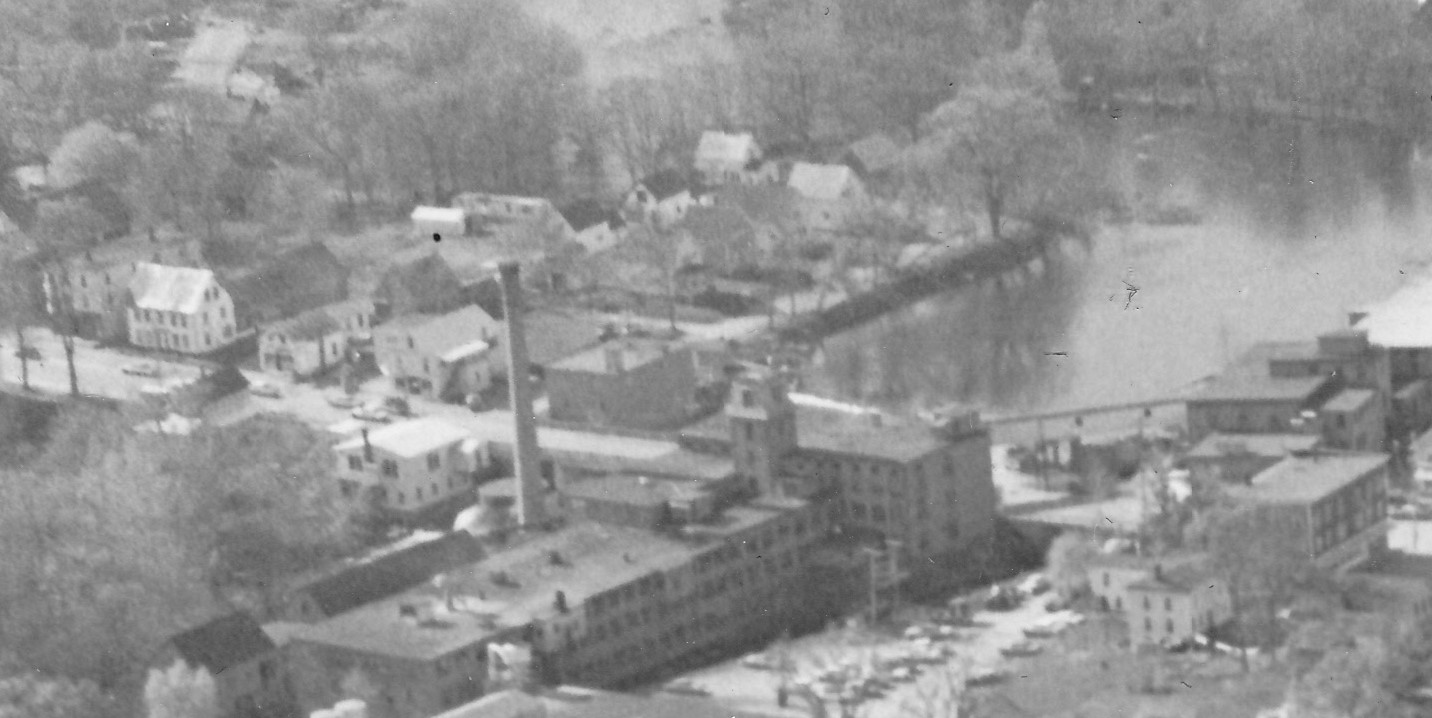
Hubbard Avenue – 1970
*
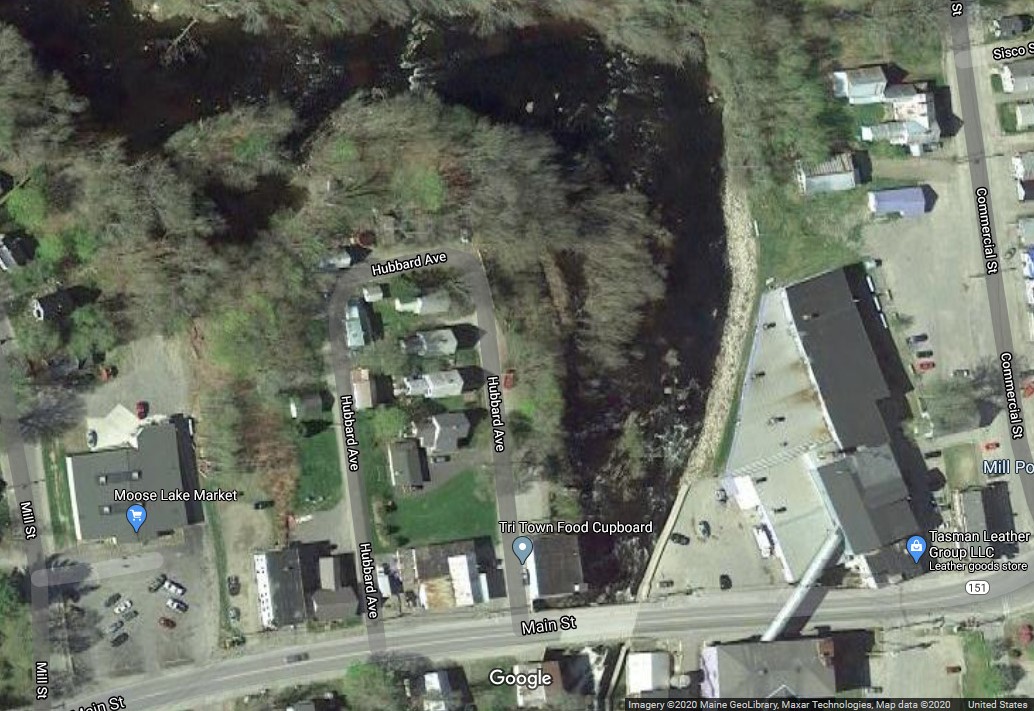
Hubbard Avenue – 2020 – Google Maps